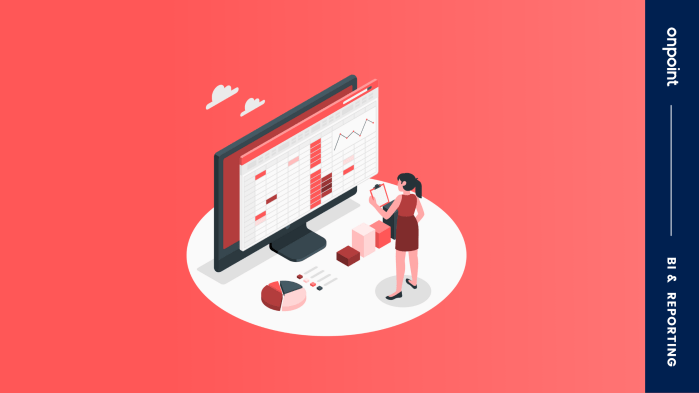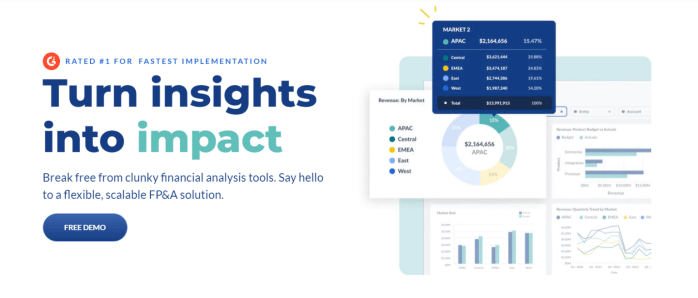Business reporting software plays a pivotal role in transforming raw data into actionable insights, enabling companies to make informed decisions swiftly. In today’s data-driven landscape, the ability to accurately track and analyze key performance indicators is essential for success. This software not only streamlines reporting processes but also enhances data accessibility, ensuring that stakeholders can rely on timely and precise information.
As organizations strive to remain competitive, the implementation of business reporting software becomes increasingly vital. With features that allow for customizable dashboards, automated reporting, and integration with other business tools, organizations can harness their data more effectively. Moreover, the importance of user-friendly interfaces cannot be overstated, as they facilitate ease of use and enhance the overall user experience.
Definition of Business Reporting Software

Business reporting software is a powerful tool designed for organizations to compile, analyze, and present data in a structured format. Its primary functions include generating reports, dashboards, and visualizations that provide insights into business performance and operations. Common features found in business reporting software encompass data visualization tools, customizable report templates, automated report generation, and real-time data analysis. The importance of business reporting software in decision-making processes cannot be overstated, as it enables stakeholders to make informed decisions based on accurate, timely, and relevant data.
Benefits of Using Business Reporting Software
Implementing business reporting software provides numerous advantages for organizations. Key benefits include enhanced data accuracy, accessibility, and improved operational efficiency. With centralized data management, errors from manual reporting are minimized, ensuring that stakeholders base their decisions on reliable information. Furthermore, business reporting software allows for easy access to data across departments, promoting a collaborative environment where insights can be shared effortlessly.
Key Features to Look For
When selecting business reporting software, organizations should consider essential features that enhance usability and functionality. A checklist of critical features includes:
- Data visualization tools for graphical representation of data
- Customizable reporting templates to suit specific needs
- Automated data integration capabilities with existing systems
- User-friendly interface for ease of use across departments
- Collaboration tools to facilitate team analysis and reporting
To illustrate various options available in the market, here’s a comparison table of different business reporting software and their standout features.
| Software | Key Features |
|---|---|
| Software A | Data visualization, customizable dashboards |
| Software B | Automated report generation, real-time analytics |
| Software C | User-friendly interface, collaboration tools |
The significance of user-friendly interfaces in reporting software lies in its ability to facilitate quick onboarding and reduce the learning curve for employees, ultimately leading to better utilization of the software.
Integration with Other Business Tools
Business reporting software can integrate seamlessly with other tools such as Customer Relationship Management (CRM) or Enterprise Resource Planning (ERP) systems. This integration allows for efficient data flow between applications, ensuring that data is consistently updated and available for reporting purposes. Benefits of this seamless data flow include reduced manual entry errors and the ability to generate comprehensive reports that encompass various aspects of business performance. Popular software that offers robust integration capabilities includes Salesforce and SAP.
Industry-Specific Solutions
Business reporting software is adaptable to various industries, including finance, retail, and healthcare. Each sector has unique reporting needs that require tailored solutions. For instance, financial institutions benefit from compliance reporting features, while healthcare facilities may require patient data analysis capabilities. Case studies demonstrate successful implementations, such as a retail company that utilized reporting software to optimize inventory management, resulting in a 20% reduction in excess stock. Customization options are critical to meet specific sector demands, ensuring that reporting tools align with industry regulations and operational requirements.
Challenges in Implementing Business Reporting Software

Organizations may face several challenges when adopting business reporting software. Common obstacles include data integration issues, resistance to change among employees, and the complexity of new systems. Strategies to mitigate these risks involve comprehensive planning, stakeholder engagement, and piloting the software before full-scale implementation. Training employees on the effective use of reporting tools is crucial, as it enhances user confidence and ensures the software is leveraged to its full potential.
Future Trends in Business Reporting Software
Emerging trends are set to shape the future landscape of business reporting software. The role of artificial intelligence (AI) and machine learning (ML) is increasingly significant, allowing for predictive analytics and automated insights. These technologies can process vast amounts of data quickly, identifying patterns that may inform strategic decisions. Predictions suggest that user requirements will evolve towards more intuitive interfaces and advanced analytical capabilities, driving demand for innovative reporting solutions.
Selecting the Right Business Reporting Software

When choosing the best business reporting software, organizations should consider a checklist of factors such as ease of use, integration capabilities, and cost-effectiveness. Comparing pricing models across various software options is essential to ensure that the selected tool fits within budget constraints while meeting functional needs. Conducting a thorough needs assessment helps identify specific requirements, ensuring that the chosen software aligns perfectly with organizational goals.
User Experience and Support
Customer support services are critical when selecting reporting software providers. Effective customer support ensures that users can resolve issues quickly, minimizing downtime and enhancing productivity. The impact of user experience on the effectiveness of reporting tools is significant; a software that is intuitive and easy to navigate promotes better engagement and more efficient reporting processes. Guidelines for evaluating user feedback and reviews should include assessing overall satisfaction, ease of use, and the responsiveness of customer support.
Case Studies and Success Stories, Business reporting software
Detailed case studies showcasing successful implementations of business reporting software reveal the transformative impact these tools can have on organizations. For instance, Company X adopted reporting software that streamlined their data analysis processes, leading to a 30% increase in operational efficiency. Testimonials from businesses highlight the advantages of adopting these tools, emphasizing improved decision-making capabilities and enhanced data-driven strategies. A summary table of successful outcomes due to software adoption can illustrate the tangible benefits experienced by various organizations.
Closing Notes
In conclusion, the adoption of business reporting software offers numerous advantages that can significantly enhance operational efficiency and decision-making capabilities. By navigating the challenges of implementation and selecting the right tools, businesses can unlock the full potential of their data. As technology continues to evolve, staying updated on industry trends and user needs will be crucial in ensuring that reporting solutions meet the demands of the future.